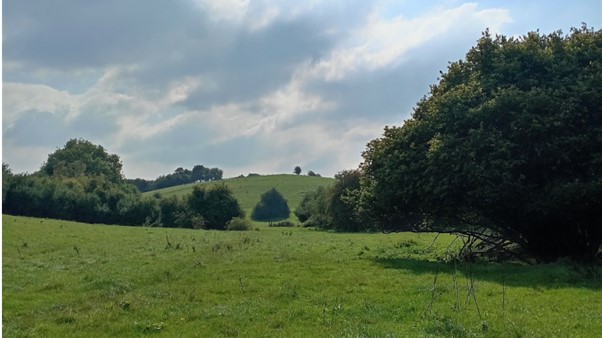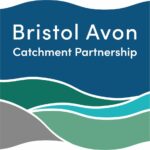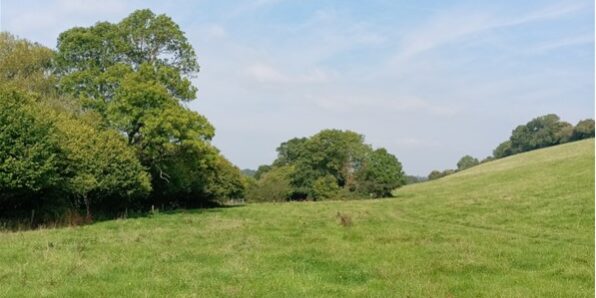The Bristol Avon Rivers Trust (BART) have started the exciting process of a feasibility study along the Queen Charlton Brook Charlton.
The Queen Charlton Brook is fed by springs from south of the village of Queen Charlton and the surrounding fields, before flowing downstream to the village of Keynsham and eventually ends up in the Bristol Avon. Large sections of the Brook have been straightened in the historic past, preventing numerous natural river processes. The current shape and artificially straight alignment of the brook, funnels water into a deep narrow channel and down the Stockford Vale, acting as a conduit of water to areas downstream in Keynsham, in times of heavy rainfall, where the watercourse becomes overwhelmed and floods onto adjacent land. Water quality data isn’t currently available for Queen Charlton Brook from the Water Framework Directive (WFD) and the catchment is currently grouped with Bristol Avon (By Bk to Netham Weir) Water Body which is classed at Moderate Ecological Status.
Local land use in the catchment has a history rooted in dairy farming, which was its primary focus until 1991. Since then, the land has experienced a period of neglect. However, local landowners have an ambitious vision that encompasses sustainable agricultural practices such as cattle grazing and some arable farming, with a strong emphasis on enhancing the quality of the land and landscape to promote biodiversity.
A key aspect of their revitalisation strategy involves the improvement of watercourses traversing the farm, Queen Charlton Brook, aiming to create new areas for wildlife to flourish such as wetlands, ponds, river restoration and tree planting. In addition, within this headwater tributary of the River Chew, this project also seeks opportunity to implement measures to slow the flow of water across the site and therefore reduce speed and quality of flow reaching downstream rivers and communities in high rainfall events. This initiative is expected to yield significant benefits by enriching the farm’s ecosystem and fostering greater biodiversity among its plant and wildlife populations. This project proposal is specifically aligned with this crucial element of the farm’s restoration plan – taking the initial step in undertaking feasibility and concept design works.
The project will deliver the following items:
-
- Watercourse walkover surveys, to map opportunities for river and floodplain restoration
- Desktop investigations into the site, including identifying any restrictions
- Soil and groundwater investigations to determine feasibility for recommended measures
- Concept Design to include an overarching “blue” opportunities masterplan for the site
- Where applicable, topographical surveys will be undertaken to provide information for concept design
- Collect a baseline riverfly sample that will provide an initial indication of water course health
The objective of this work package is to conduct a series of thorough walkover surveys and investigations aimed at producing a comprehensive concept design report. This report will offer a masterplan outlining various “blue” options for Queen Charlton Brook. These options include strategies to restore river and riparian habitats, reinstate historical river channels, and propose methods to reconnect the floodplain at multiple points along the Brook’s course. Following an initial site visit conducted by BART, it has become evident that the site holds exciting opportunities to support biodiversity and serve as a suitable location for Natural Flood Management, potentially mitigating the impact of high flows downstream in Keynsham.
The resulting outputs will provide the landowners and local partners with a series of “blue” recommendations to consider within the headwaters and main course of the Charlton Brook.

We expect ongoing collaboration with landowners to explore funding options identified in the feasibility study. Given the complexity, scale, and size of the land involved, the project will unfold over an extended period and working with several partners with complementary specialisms. The water features are expected to play a central role in the restoration efforts at this site, providing habitat for diverse species and offering the community enhanced public access. Regionally, it will provide an opportunity to connect habitats, including existing and new habitats that will be developed just downstream along the Bristol Avon via the Bath and Northeast Somerset Council’s WaterSpace programme on the Avon.
For more information on the Queen Charlton ‘Blue’ Optioneering project, please contact BART via info@bristolavonriverstrust.org
Thank you to the local Landowners and Bristol Avon Catchment Partnership for funding the initial scoping stages of this exciting project.








